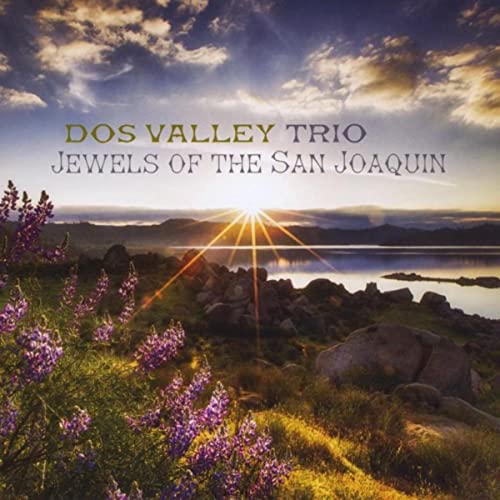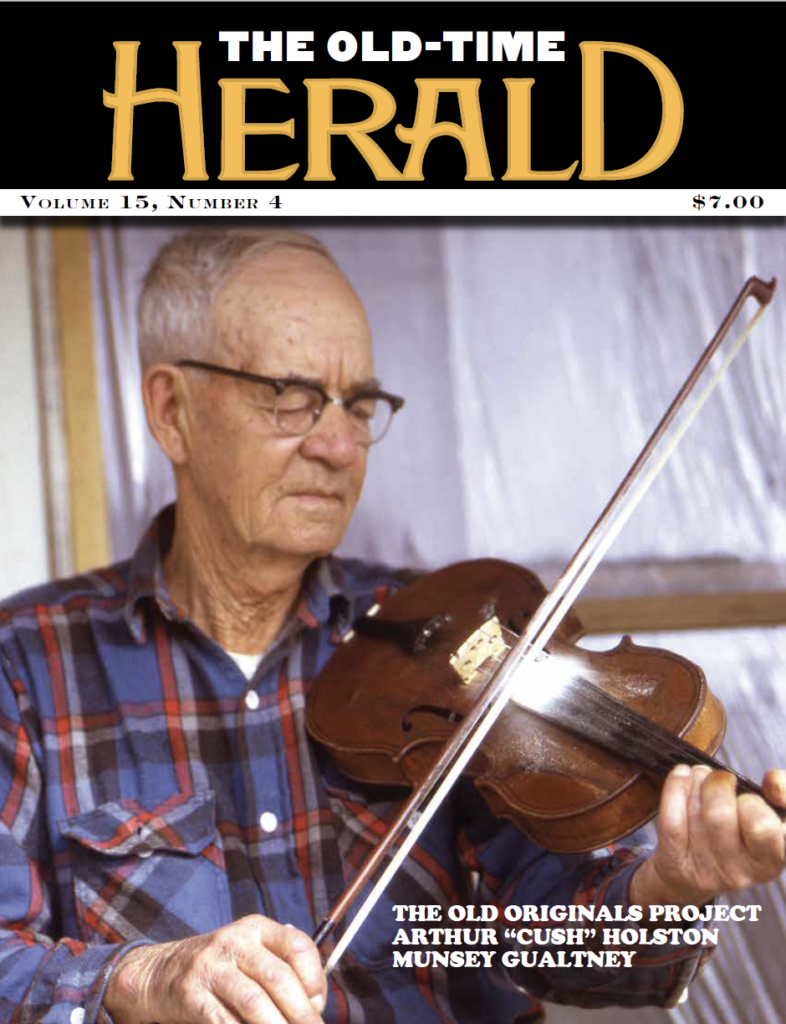Harry Liedstrand, Cindy Liedstrand, and Terry Barnett (usual configuration: Harry fiddle, Cindy guitar, and Terry mandolin) are the Dos Valley Trio, and their liner notes start, “Jewels of the San Joaquin is a musical heritage preservation project that showcases traditional fiddle tunes and songs we learned from four outstanding Central Valley musicians: Kenny Hall, Otis Pierce, Ron Hughey and John “Dad” Crockett.” (A reviewer is grateful when the musicians do a large part of his work for him, and this sentence describes the CD perfectly.) The latter three were first-generation source musicians; “Dad” Crockett and his family made a number of 78s, which is probably where you learned “Rabbit, Where’s Your Mammy” (unless you call the tune “John Brown’s Dream” and learned it from the Galax/Mount Airy sources). Hughey and Pierce were both from musical families with original tunes and songs. Kenny Hall, born blind in 1923, learned most of his tunes and songs from recordings or from helpful music teachers who would take a book such as Cole’s 1,000 Fiddle Tunes and learn the tune well enough to teach it to Kenny.
Kenny would then teach these tunes to Harry (we know this, again, through the wonderful liner notes) at sessions starting in 1968, when Harry would visit Kenny, bearing his copy of Cole’s or Mellie Dunham’s book and play the notes as written, and Kenny would say, “No, play it like this” until Harry learned Kenny’s version. (The next step, of course, was teaching it to the rest of the Dos Valley Trio and working up an arrangement.) This describes most of the tunes on this CD, or about three-quarters of the album.
The tunes themselves, mostly from Hall, are from a variety of sources (carefully documented!), starting with the straightforward I-IV-V tune “The Forest of Bondi” and going on through “Claremont Canyon,” a major-minor tune sounding much like Northcutt’s “Cuckoo’s Nest,” and the Dorian-mode “Crockett’s Reel,” the last, of course, from the Crockett family. A particular delight was “Dominion Reel,” which I would bet came through Don Messer and his radio programs. (Messer, after all, was from the Dominion of Canada!)
The remaining four tracks are songs, three from Hall, the fourth an autobiographical song from Otis Pierce, “Every Bush and Tree.” Of the songs learned from Hall, one is “Ti E Ti O,” a cowboy ballad (yes, the hero dies) written and recorded by Gene Autry in 1934; another is “The Copper and the Gunman,” a melodrama told in song by Irving Kaufman, and the third is Hall’s own paean to Texas, to the tune of “Wildwood Flower.”
These are three excellent musicians, paying homage to the people from whom they learned these tunes and songs, and to the place they learned them: the San Joaquin Valley of central California. One last aside: when Dad Crockett and his family recorded their 78s, the band was called “Crockett’s Kentucky Mountaineers” because everybody knew that old-time music was made in the mountains, not California. How wrong they were!


Leave a Reply